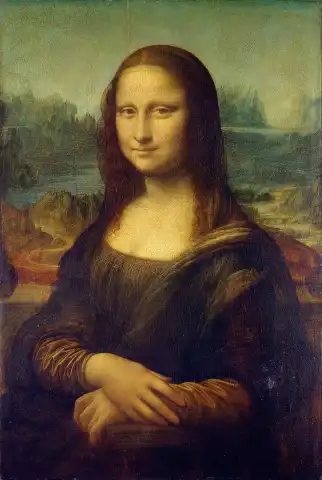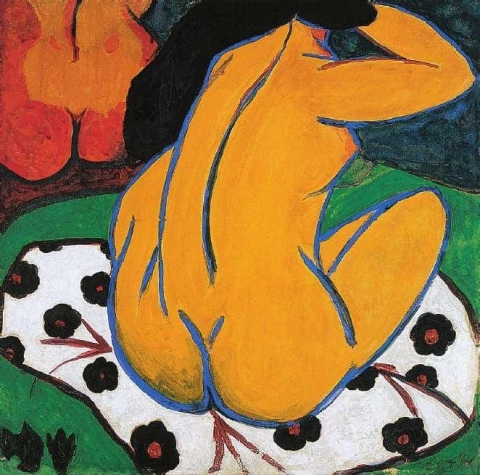Hand-painted painting reproductions - Movements - Geometric abstraction
Imagine owning a museum-worthy piece of art, created by the greatest artists in history and reproduced by passionate and experienced painters. At POD, we offer you the opportunity to make that dream a reality. We reproduce the works of art of your favorite painters from the Geometric abstraction art movement in the smallest details, so that you can enjoy them in your own home.
Our reproductions are made by experienced artists who use the best materials and techniques. We are committed to providing you with works of art of the highest quality, which will bring joy and inspiration to your family for generations to come.
Geometric Abstraction : A Comprehensive Biography of a Revolutionary Art Movement
Geometric Abstraction is one of the most significant art movements in the history of modern painting, characterized by its use of simple geometric shapes and its non-representational approach to art. This movement emerged in the early 20th century as part of the broader modernist shift, rejecting traditional techniques and narratives of Western art. By emphasizing form, color, and structure over subject matter, geometric abstraction paved the way for new aesthetic possibilities and played a crucial role in shaping contemporary art.
Historical Context : The Birth of Geometric Abstraction
The roots of geometric abstraction can be traced back to the early 20th century when artists began to move away from naturalistic representation. The movement emerged in response to the rapid social, technological, and philosophical changes of the time. Industrialization, the advent of new scientific theories, and the rise of urban modernism significantly influenced artists' perspectives. As modern life became more complex and abstract, so too did the visual language used by artists.
Geometric abstraction began to crystallize during the years following World War I, when many artists sought to create a universal visual language that transcended cultural and political boundaries. The desire to distill art to its purest form and the rejection of decorative, narrative-driven works became central themes.
Key Artists and Influences
Several pioneering artists are integral to the development of geometric abstraction. These artists laid the foundation for an entire movement that would span continents and generations. The most famous among them include:
Kazimir Malevich : A Russian avant-garde artist, Malevich is widely regarded as one of the founders of geometric abstraction. His revolutionary work "Black Square" (1915) marked a decisive break from figurative art. Malevich's philosophy of Suprematism was based on the belief that geometric forms, especially the square, could express pure artistic feeling.
Piet Mondrian : A Dutch painter, Mondrian's development of De Stijl (The Style) was instrumental in shaping geometric abstraction. His abstract compositions of grids, horizontal and vertical lines, and primary colors (most notably in works like "Composition with Red, Blue, and Yellow") were aimed at creating harmony and order, reflecting his spiritual belief in the interconnectedness of all things.
Wassily Kandinsky : Often considered one of the first abstract painters, Kandinsky's geometric abstraction was rooted in spiritual and emotional expression. His theoretical writings, such as "Concerning the Spiritual in Art", argued for the transcendent power of abstract forms. His works feature dynamic compositions of shapes, lines, and colors.
Theo van Doesburg : A co-founder of De Stijl alongside Mondrian, Van Doesburg played a crucial role in propagating geometric abstraction across Europe. His works, such as "Counter-Composition V", focused on the purity of geometric forms and mathematical precision, aiming to create a visual language that was universal and devoid of individual expression.
Technical Aspects : The Language of Geometry
The technical execution of geometric abstraction is fundamentally rooted in the exploration of shape, line, and color. Artists in this movement often abandoned traditional brushwork in favor of clean, sharp edges and precise geometric arrangements. Some of the key characteristics of geometric abstraction include:
Geometric Shapes : Circles, squares, rectangles, triangles, and polygons dominate compositions. These shapes are not meant to represent objects or figures but are appreciated for their intrinsic form.
Flatness and Two-Dimensionality : Artists emphasized the two-dimensional plane of the canvas, rejecting the illusion of depth that had been central to Western painting since the Renaissance. This flattening of the image surface was crucial to the movement's formal purity.
Primary Colors and Limited Palettes : Mondrian and De Stijl artists were particularly known for their use of primary colors—red, blue, and yellow—along with black, white, and gray. These basic colors, when combined with geometric shapes, created harmonious compositions.
Mathematical Precision : Many geometric abstractionists, especially within the De Stijl movement, adhered to strict mathematical principles when composing their works. Mondrian, for example, applied the Golden Ratio in his grid-based works, reflecting his belief in an underlying order to the universe.
Evolution and Influence
Geometric abstraction did not develop in isolation; it was heavily influenced by earlier movements such as Cubism and Futurism, which had begun to deconstruct objects into abstract geometric planes. The movement also interacted with developments in architecture and design, notably through Bauhaus, which sought to integrate art, architecture, and technology using geometric principles.
The influence of geometric abstraction extended beyond Europe. By the 1930s and 1940s, artists in North America began to adopt and adapt its techniques. This was especially prominent in the works of Josef Albers, whose series "Homage to the Square" explored the optical effects of color interaction through nested squares.
In the post-World War II era, geometric abstraction inspired movements like Minimalism and Op Art. Minimalists like Donald Judd and Frank Stella continued to explore the formal aspects of geometric shapes, reducing painting to its essential components of form and color. Meanwhile, Op Art artists such as Victor Vasarely used geometric abstraction to create dynamic, optical effects that engaged the viewer's perception.
Legacy and Contemporary Relevance
The legacy of geometric abstraction is deeply embedded in the DNA of modern and contemporary art. Its emphasis on form, color, and the rejection of traditional narrative remains a powerful force in today's art world. Contemporary artists, architects, and designers continue to be inspired by the movement's principles, using geometric abstraction to explore themes of order, chaos, and the human relationship to space and technology.
Moreover, the influence of geometric abstraction can be seen in a wide range of disciplines, from digital art to graphic design, where the movement's clarity of form and visual purity resonate with modern sensibilities.
Conclusion
Geometric abstraction stands as a cornerstone in the evolution of modern art. With its rejection of representation in favor of pure form and its embrace of mathematical precision, the movement not only challenged traditional notions of painting but also redefined the very purpose of art. Through the pioneering works of artists like Kazimir Malevich, Piet Mondrian, Wassily Kandinsky, and Theo van Doesburg, geometric abstraction continues to inspire and influence artists, ensuring its place as a major movement in the history of painting.
By focusing on geometric shapes and abstract forms, geometric abstraction opened up a world of aesthetic possibilities, proving that art could be both universal and deeply personal. As a result, it remains a pivotal and enduring movement within the broader trajectory of 20th and 21st-century art.









